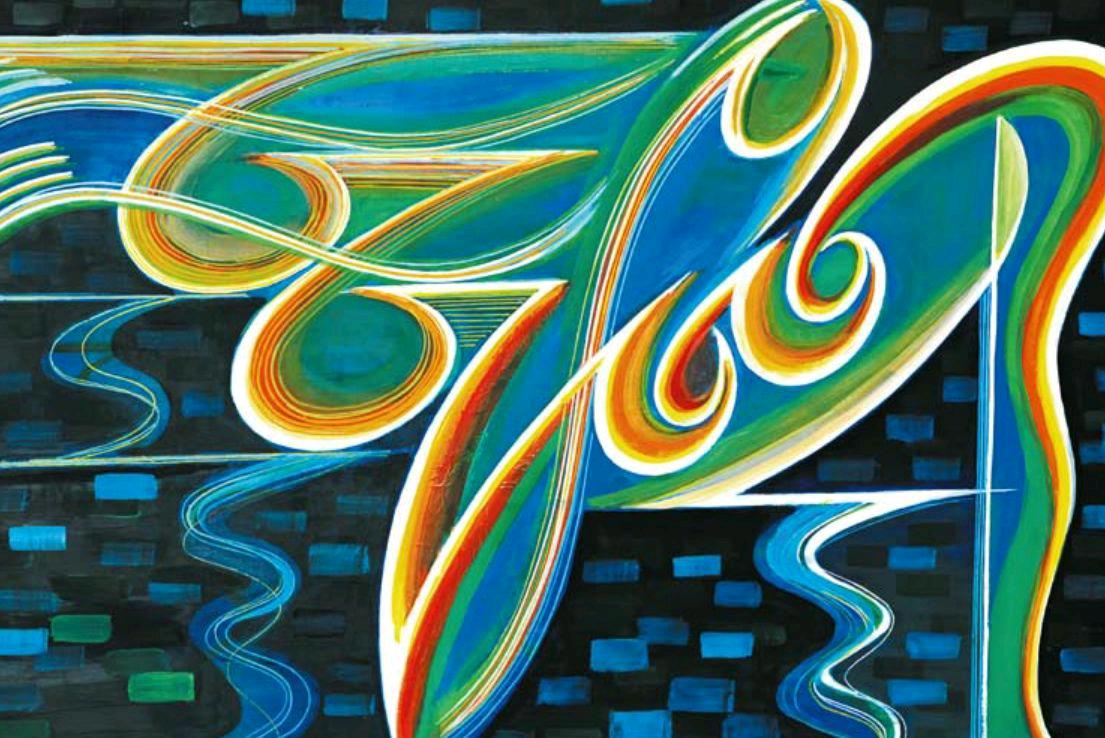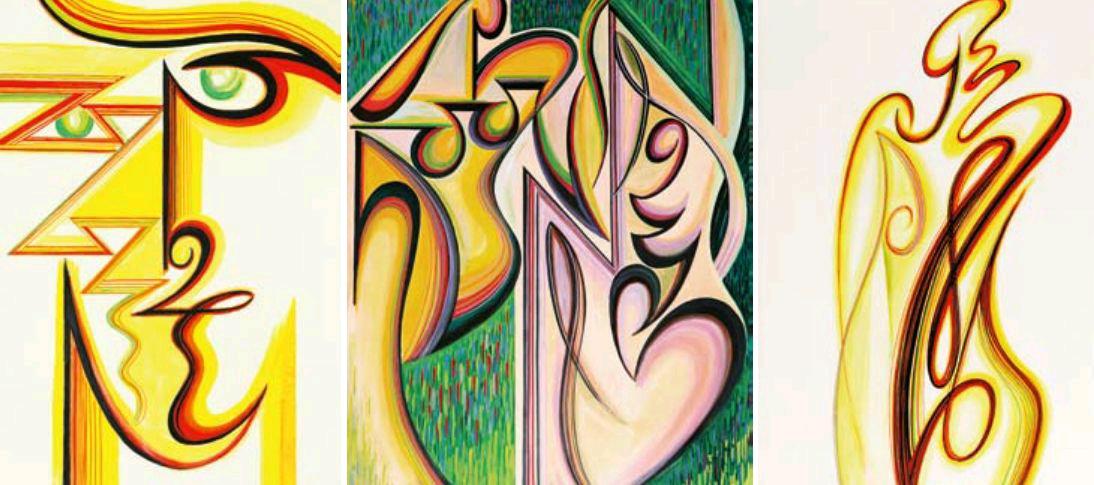Melodic Brushstrokes

Lines are indispensable in paint- ings. They connect dots on a flat surface, and influence and determine a paintings form, content, and meaning. However, looking at todays lines from the brushes of painters of various nations, most have been reduced to slaves of patterns or decorative tools, lacking personality and vitality. In many of these paintings, lines are thrown away and their artistic features havent been fully explored.
Painter Jin Songhe believes that in order to develop lines into pure and independent painting art, people should absorb nourishment from music, especially major musical works. Classical music possesses high artistic value, and the lines of its rhythm are inspirational. Thus, Jin has pioneered the aesthetic concept of “line painting art”, an idea rich in connotations and full of vitality.
Based on Jins concept, lines become a pure, independent, and integrated form of art and enjoy great developmental prospects. Jin later created “Jins musical painting,” oil painting emphasizing linesvarious expressions, highlighting their personality and lifting the art of line painting to a new level.
“Jins musical paintings” exhibit unusual human features, facial expressions, bodies, and postures, which resemble the curves of rhythm. This new dynamic and rhythmic style of painting, with careful deployment of various lines, displays a unique charm.
Jin began studying fine arts and music as a child. As an artist, he has explored many forms of painting, expertly learned to play the piano and violin, and continues studying composition and music theory. As a veteran teacher of music and fine arts, he is especially interested in studying artistic synesthesia. Thanks to his rich experience in both fine arts and music, he is able to grasp and understand shared characteristics of the two drastically different forms.
Innovation is of great importance to art. Jin combines music and paintings to create a unique style. He bestows auditory qualities to visual art, which makes his work refreshing and impressive.

